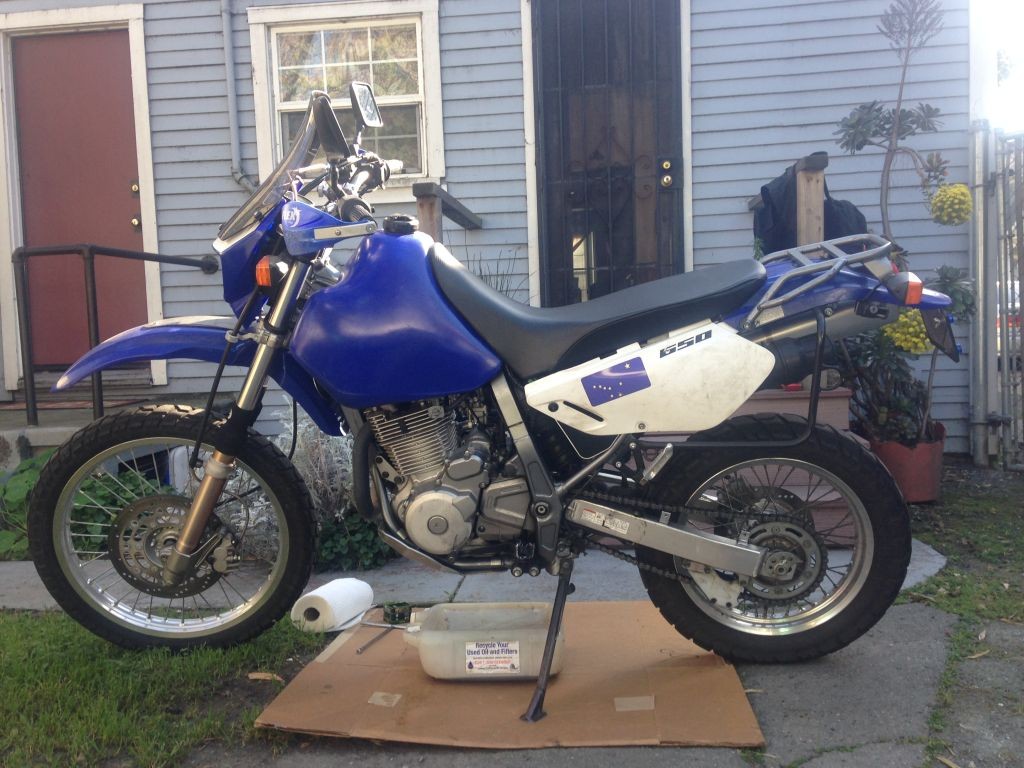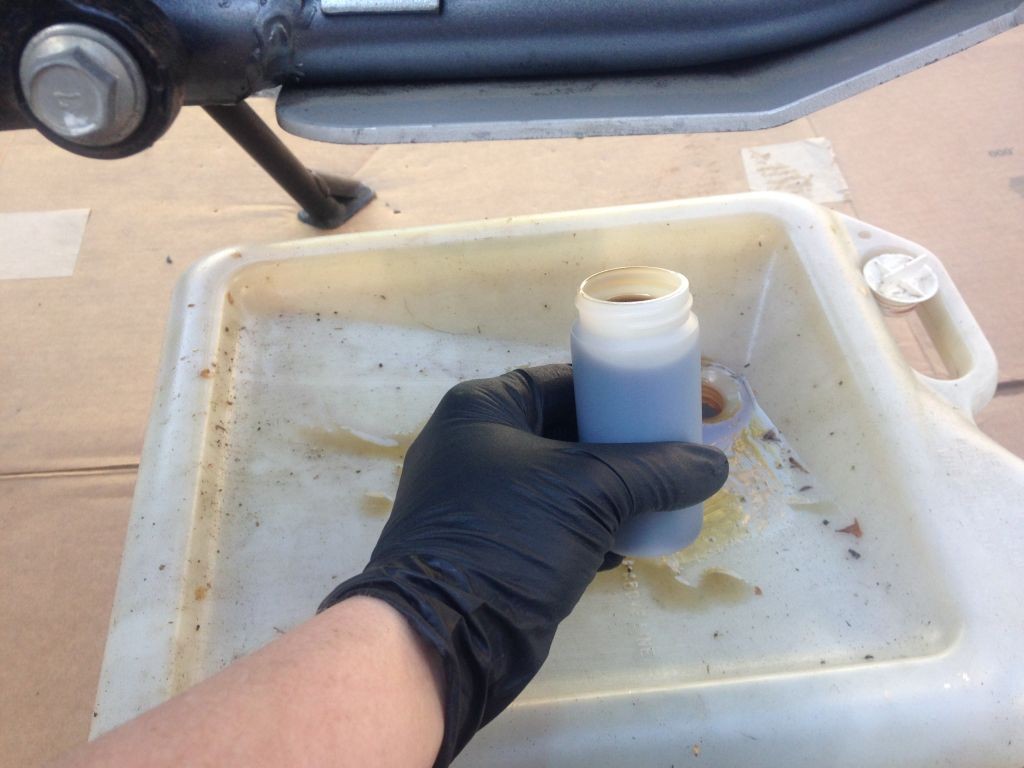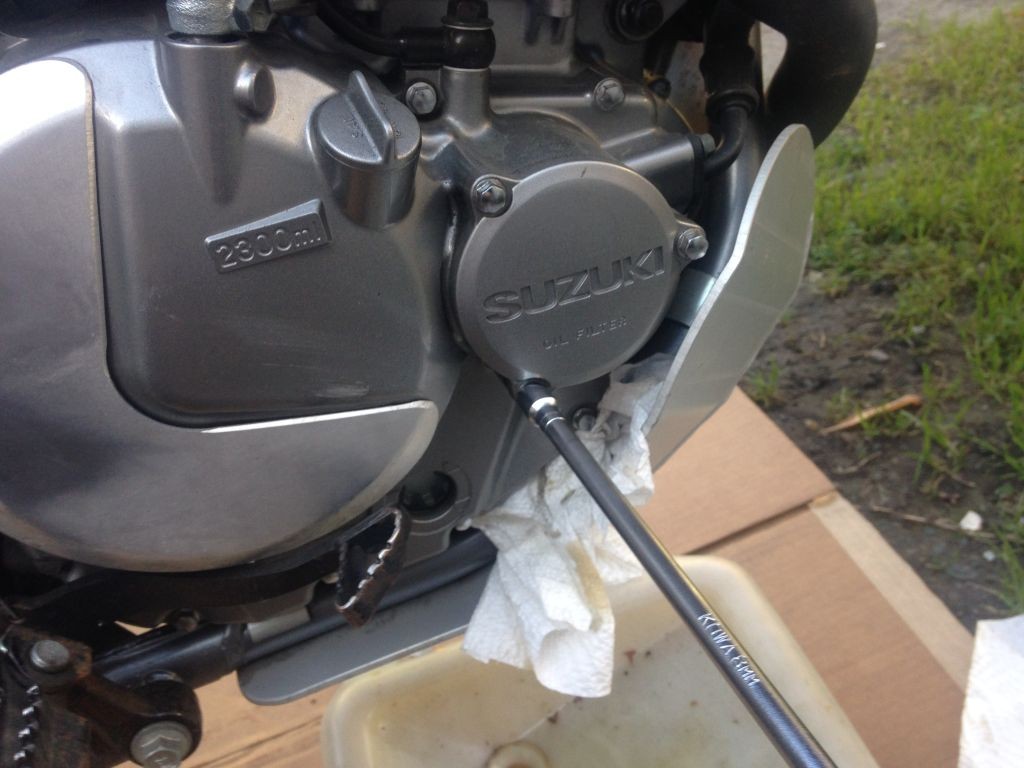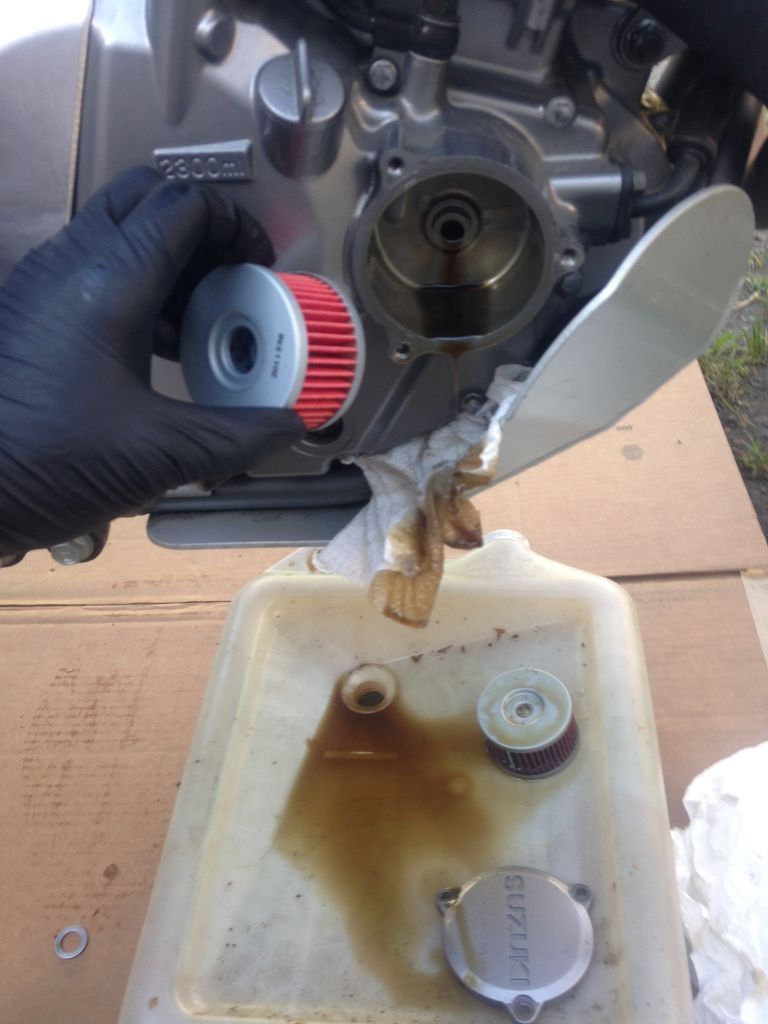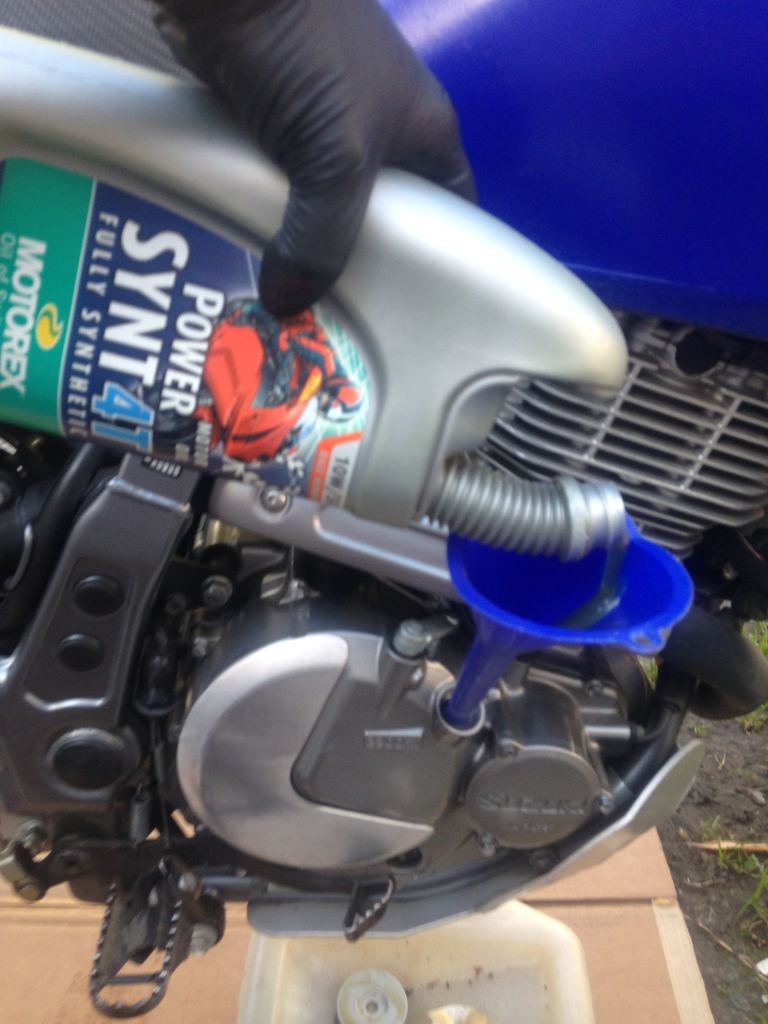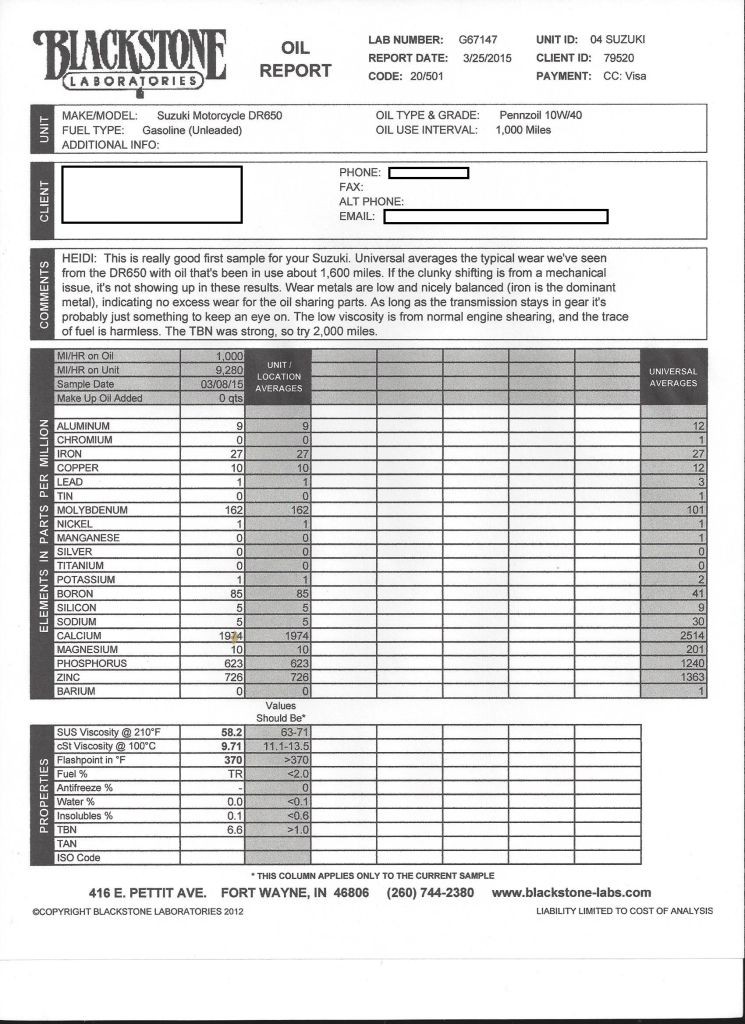In a post earlier this year, I changed my SUV’s oil and sent a sample in for oil analysis to Blackstone Labs. Encouraged by the results (hearing that, based on oil condition, I could extend the car’s oil-change intervals was a big plus) and curious to see how my motorcycle’s oil would stack up, I got another Blackstone oil test kit.
My Suzuki DR650 is a simple, refreshingly primitive machine, but it does suffer from clunky shifting; I was hoping that adding full synthetic oil, making the change from the conventional oil I’d always used in these single-cylinder bikes, would smooth the shifting process. The conventional 10w40 oil in the bike was only 1,000 miles old, but the time seemed right. Further, I wanted to see how much wear and tear the conventional oil had suffered, to see whether any engine problems might be developing, and get the lab’s recommendation for this particular machine’s oil-change interval.
I prepped all my tools and supplies and set them out.
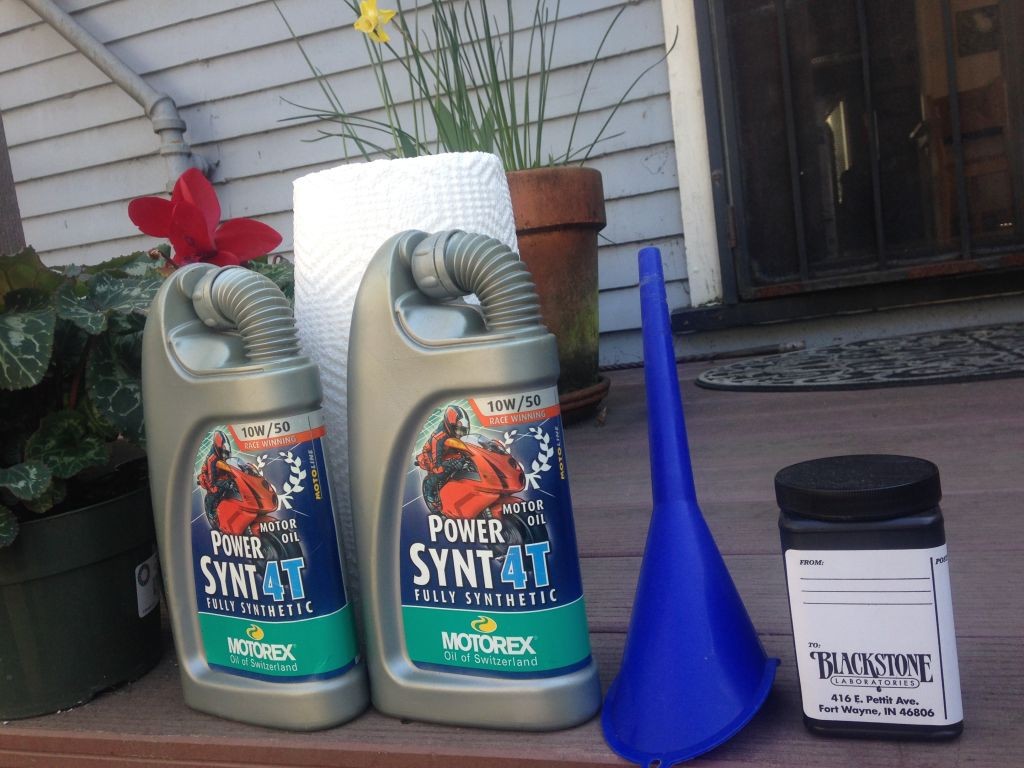
Got my DR650 set up with some cardboard to catch any drips (and cushion the ground for me) and an oil pan.
I loosened the drain bolt and started the flow of oil.
Ideally, the oil sample for Blackstone Laboratories is neither from the very beginning of the oil change, nor the end. So, I waited a couple of seconds, then put the sample bottle into the flow of old oil from the pan, got a good sample, and let the rest of the oil drain into my pan.
With the sample collected, I capped it and set it aside. Changing the filter was next.
Once the new filter was in place, I added the oil I’d chosen: Motorex 20w50 full synthetic oil. A bit fancy for a thumper, but again, I was looking for smoother shifting, as well as longevity.
Sure enough, the fresh synthetic oil did smooth the bike’s shifting to some degree; I miss fewer shifts. Still, I was curious about how the old conventional oil stacked up.
I packaged up the oil sample, sent it in to Blackstone, and waited. In a week or so, the results were emailed to me:
They were good, and showed the thumper’s engine, rough gearbox and all, to be in excellent shape. Since I’d opted for the extra TBD analysis ($10 more, for a $35 total), I got not only an analysis of the oil, but viscosity analysis and suggestions for how far I might push my next oil change. The lab suggested doubling my interval from 1k to 2k miles; I’ll go 3,000 and see how that changes my results.
All in all, a satisfying experiment; I am trying different oils, conventional and synthetic, in my bike, and getting accurate data to support it.
For more info on how to recycle the oil and filter you’ve just changed, check out the rest of the Riders Recycle site.

